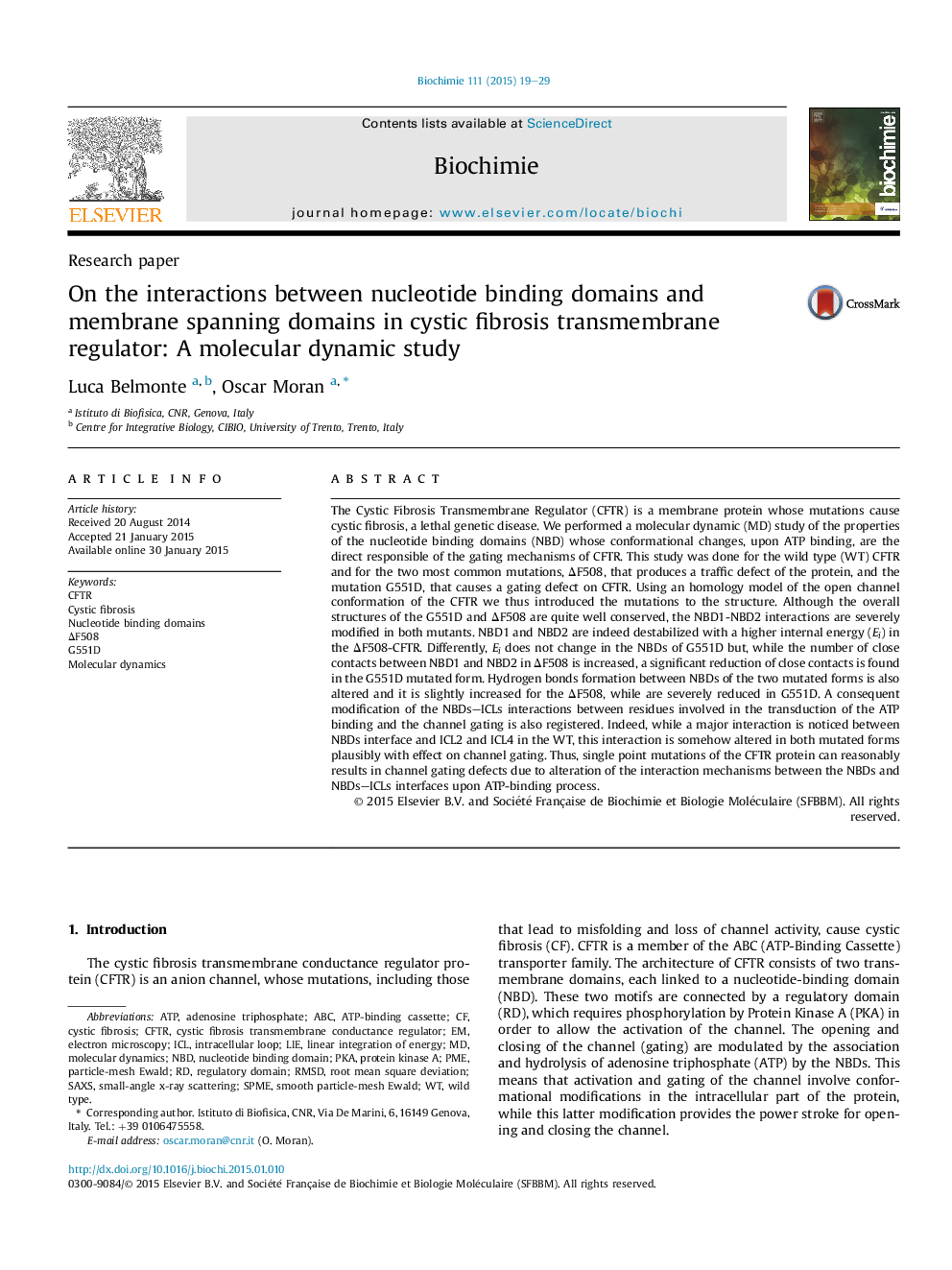| کد مقاله | کد نشریه | سال انتشار | مقاله انگلیسی | نسخه تمام متن |
|---|---|---|---|---|
| 1951995 | 1538420 | 2015 | 11 صفحه PDF | دانلود رایگان |
• Molecular dynamics simulation were done on wild type and mutant CFTR models.
• Mutations ΔF508 and G551D modifies the interactions between NBDs and NBDs–ICLs.
• Mutations caused changes are consistent with CFTR Cl– channel gating defects.
The Cystic Fibrosis Transmembrane Regulator (CFTR) is a membrane protein whose mutations cause cystic fibrosis, a lethal genetic disease. We performed a molecular dynamic (MD) study of the properties of the nucleotide binding domains (NBD) whose conformational changes, upon ATP binding, are the direct responsible of the gating mechanisms of CFTR. This study was done for the wild type (WT) CFTR and for the two most common mutations, ΔF508, that produces a traffic defect of the protein, and the mutation G551D, that causes a gating defect on CFTR. Using an homology model of the open channel conformation of the CFTR we thus introduced the mutations to the structure. Although the overall structures of the G551D and ΔF508 are quite well conserved, the NBD1-NBD2 interactions are severely modified in both mutants. NBD1 and NBD2 are indeed destabilized with a higher internal energy (Ei) in the ΔF508-CFTR. Differently, Ei does not change in the NBDs of G551D but, while the number of close contacts between NBD1 and NBD2 in ΔF508 is increased, a significant reduction of close contacts is found in the G551D mutated form. Hydrogen bonds formation between NBDs of the two mutated forms is also altered and it is slightly increased for the ΔF508, while are severely reduced in G551D. A consequent modification of the NBDs–ICLs interactions between residues involved in the transduction of the ATP binding and the channel gating is also registered. Indeed, while a major interaction is noticed between NBDs interface and ICL2 and ICL4 in the WT, this interaction is somehow altered in both mutated forms plausibly with effect on channel gating. Thus, single point mutations of the CFTR protein can reasonably results in channel gating defects due to alteration of the interaction mechanisms between the NBDs and NBDs–ICLs interfaces upon ATP-binding process.
Journal: Biochimie - Volume 111, April 2015, Pages 19–29
